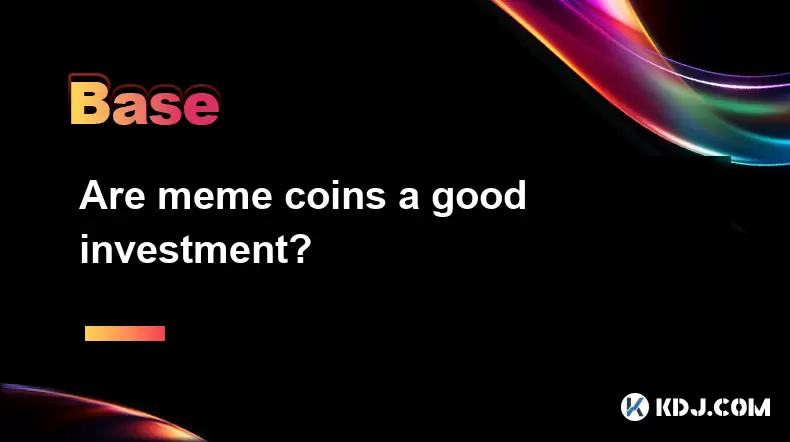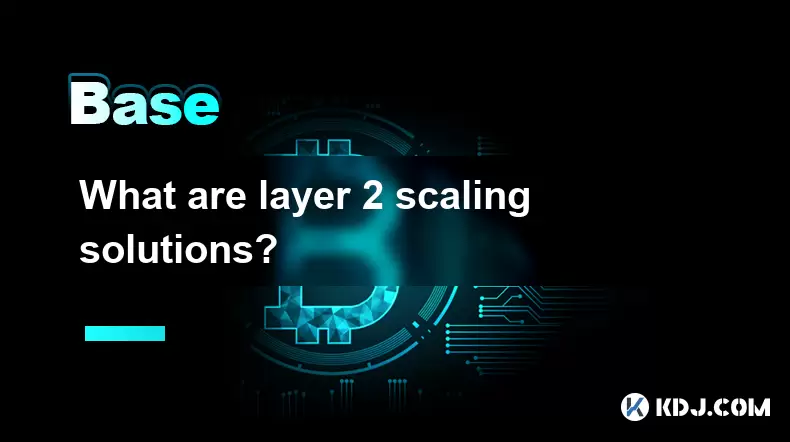-
 Bitcoin
Bitcoin $116700
0.24% -
 Ethereum
Ethereum $3973
4.34% -
 XRP
XRP $3.283
7.68% -
 Tether USDt
Tether USDt $1.000
0.01% -
 BNB
BNB $789.8
2.27% -
 Solana
Solana $176.2
3.31% -
 USDC
USDC $0.9999
0.00% -
 Dogecoin
Dogecoin $0.2238
5.14% -
 TRON
TRON $0.3389
-0.51% -
 Cardano
Cardano $0.7907
4.03% -
 Stellar
Stellar $0.4527
10.02% -
 Hyperliquid
Hyperliquid $41.07
4.27% -
 Sui
Sui $3.794
1.77% -
 Chainlink
Chainlink $19.49
10.40% -
 Bitcoin Cash
Bitcoin Cash $580.9
0.74% -
 Hedera
Hedera $0.2617
4.32% -
 Avalanche
Avalanche $23.41
3.67% -
 Ethena USDe
Ethena USDe $1.001
-0.03% -
 Litecoin
Litecoin $122.4
1.38% -
 Toncoin
Toncoin $3.364
1.49% -
 UNUS SED LEO
UNUS SED LEO $8.988
0.37% -
 Shiba Inu
Shiba Inu $0.00001295
2.82% -
 Uniswap
Uniswap $10.62
5.75% -
 Polkadot
Polkadot $3.922
4.46% -
 Dai
Dai $1.000
0.01% -
 Bitget Token
Bitget Token $4.494
2.15% -
 Monero
Monero $268.0
-1.30% -
 Cronos
Cronos $0.1523
3.68% -
 Pepe
Pepe $0.00001127
4.43% -
 Aave
Aave $285.4
4.85%
How to earn interest on cryptocurrency?
Earning crypto interest involves lending or staking assets via DeFi or CeFi platforms, offering yields from 2% to over 15% APY, but comes with risks like hacks, volatility, and platform insolvency.
Aug 09, 2025 at 01:22 am

Understanding Cryptocurrency Interest Mechanisms
Earning interest on cryptocurrency involves lending or staking your digital assets to generate passive income. Unlike traditional banking, where interest is paid by institutions using deposited funds, crypto interest arises through decentralized finance (DeFi) protocols, centralized lending platforms, and blockchain staking mechanisms. The core idea is to allow users to lock up their cryptocurrency in exchange for periodic returns. These returns are typically expressed as an annual percentage yield (APY) and can vary significantly depending on the platform, asset, and underlying mechanism.
One of the primary ways interest is generated is through lending protocols. When you deposit your crypto into a lending platform, it becomes available for borrowers—often in the form of collateralized loans. In return, lenders receive interest paid by borrowers. This process is automated via smart contracts on DeFi platforms like Aave or Compound. On centralized platforms like Celsius (before its insolvency) or Nexo, the platform manages the lending process and distributes interest to depositors.
Another method is staking, which applies to proof-of-stake (PoS) blockchains such as Ethereum 2.0, Cardano, or Solana. By staking your coins, you help validate transactions and secure the network. In return, the protocol rewards you with additional tokens. Staking rewards are often referred to as interest, though technically they are block rewards distributed to participants.
Choosing the Right Platform for Crypto Interest
Selecting a secure and reliable platform is critical when earning interest on cryptocurrency. Platforms fall into two main categories: centralized finance (CeFi) and decentralized finance (DeFi). Each has distinct advantages and risks.
For CeFi platforms such as Nexo, Crypto.com Earn, or Binance Savings, the process is user-friendly and often includes customer support. These platforms typically offer fixed or flexible interest rates on deposits. To get started:
- Create an account and complete KYC verification
- Deposit supported cryptocurrencies (e.g., BTC, ETH, USDT)
- Choose between flexible or locked-term deposits
- Monitor your dashboard for accrued interest, usually paid daily
DeFi platforms like Aave, Compound, or Yearn Finance operate without intermediaries. You connect a Web3 wallet (e.g., MetaMask), deposit assets into a liquidity pool, and earn interest based on supply and demand dynamics. Interest rates are variable and updated in real time. The steps include:
- Connect your wallet to the platform’s interface
- Approve token usage via a blockchain transaction
- Deposit your crypto into the desired lending pool
- Track earnings through the dashboard or blockchain explorer
Security is paramount. Always verify the platform’s audits, insurance coverage, and reputation. Never share private keys or seed phrases.
Calculating and Maximizing Your Returns
Interest rates in the crypto space can range from 2% to over 15% APY, depending on the asset and platform. Stablecoins like USDC or DAI often offer higher yields than volatile assets like Bitcoin or Ether, due to lower risk and higher demand for lending.
To calculate your potential earnings:
- Use the formula: Daily Interest = (Principal × APY) / 365
- For example, $10,000 at 8% APY earns approximately $2.19 per day
- Reinvesting interest compounds returns over time
To maximize returns:
- Compare APYs across multiple platforms using tools like DeFi Pulse or CoinGecko
- Consider liquidity mining or yield farming, where you provide liquidity to decentralized exchanges (e.g., Uniswap) and earn trading fees plus token rewards
- Be cautious of impermanent loss when providing liquidity to volatile pairs
Some platforms offer tiered interest rates based on loyalty or staked platform tokens. For instance, holding Crypto.com’s CRO or Binance’s BNB may unlock higher APYs.
Understanding Risks and Security Measures
Earning interest on crypto is not risk-free. The most significant threats include smart contract vulnerabilities, platform insolvency, and market volatility.
Smart contracts on DeFi platforms can contain bugs. Even audited code may have undiscovered flaws. In 2022, several high-profile exploits drained millions from DeFi protocols. To mitigate this:
- Use platforms with multiple third-party audits
- Check for bug bounty programs
- Avoid new or unaudited protocols
CeFi platforms may face liquidity crises. If a platform lends out user funds and borrowers default, it may not be able to return deposits. This occurred with Celsius and Voyager. To protect yourself:
- Diversify across platforms
- Avoid putting all funds in a single provider
- Prefer platforms with proof of reserves and insurance funds
Volatility affects both your principal and interest payments. If you earn interest in a volatile token, its value may drop. Staking ETH during a bear market may yield tokens that are worth less in USD terms.
Always enable two-factor authentication (2FA), use hardware wallets for large holdings, and never click on suspicious links.
Step-by-Step Guide to Start Earning Interest
To begin earning interest on your cryptocurrency, follow these steps carefully:
- Select a reputable platform (e.g., Nexo for CeFi, Aave for DeFi)
- Create an account and verify your identity if required
- Deposit cryptocurrency into your wallet or directly into the platform
- Navigate to the “Earn” or “Lend” section
- Choose the asset and deposit amount
- Select flexible or fixed-term options if available
- Confirm the transaction and monitor your earnings dashboard
For DeFi platforms:
- Install and fund a Web3 wallet like MetaMask
- Visit the platform’s official website
- Connect your wallet securely
- Search for the lending market of your chosen asset
- Approve the token for use on the platform (this requires a gas fee)
- Deposit the amount and confirm
- View your position under “Your Account” or “Supplied Assets”
Interest accrues every block (approximately every 12 seconds on Ethereum) and is usually claimable at any time.
Frequently Asked Questions
Is crypto interest taxable?
Yes, in most jurisdictions, crypto interest is considered taxable income. It is typically taxed at the time of receipt, based on the fair market value in your local currency. Keep detailed records of all interest payments for tax reporting.
Can I lose money earning crypto interest?
Yes. You can lose money due to platform failure, hacks, smart contract exploits, or declining asset value. Even if interest accrues, a drop in the underlying asset’s price can result in a net loss.
What happens if I withdraw early from a fixed-term deposit?
Some platforms charge early withdrawal penalties or forfeit accrued interest. Others may not allow early withdrawal at all. Always review the terms before locking funds.
Are there minimum deposit requirements?
Minimums vary. CeFi platforms like Crypto.com require minimum holdings of their native token to unlock higher rates. DeFi platforms usually have no minimums, but gas fees may make small deposits uneconomical.
Disclaimer:info@kdj.com
The information provided is not trading advice. kdj.com does not assume any responsibility for any investments made based on the information provided in this article. Cryptocurrencies are highly volatile and it is highly recommended that you invest with caution after thorough research!
If you believe that the content used on this website infringes your copyright, please contact us immediately (info@kdj.com) and we will delete it promptly.
- Token Buybacks, Onchain Data, and Developers: What's Buzzing in Crypto
- 2025-08-09 05:10:15
- Coinbase at Oppenheimer Conference: A Glimpse into the Future of Crypto Trading
- 2025-08-09 04:50:14
- Pepe Price Prediction: Can the Meme Coin Maintain Its Momentum?
- 2025-08-09 05:15:24
- Bitcoin, Ethereum, XRP in 2032: Crystal Ball Gazing or Calculated Prediction?
- 2025-08-09 04:30:14
- Bitcoin, Ethereum, and Support Levels: Navigating the Crypto Landscape
- 2025-08-09 04:30:14
- Roman Storm, Funding Effort, and the Looming Defense Retrial: A New York Minute on the Tornado Cash Case
- 2025-08-09 02:50:14
Related knowledge

Can you reuse a crypto wallet address?
Aug 08,2025 at 03:49pm
Understanding Wallet Addresses in CryptocurrencyA crypto wallet address is a unique identifier used to send and receive digital assets on a blockchain...

Are meme coins a good investment?
Aug 08,2025 at 11:36pm
Understanding Meme Coins and Their OriginsMeme coins are a category of cryptocurrencies that originated from internet humor or viral trends rather tha...

What are layer 2 scaling solutions?
Aug 09,2025 at 04:07am
Understanding Layer 2 Scaling Solutions in CryptocurrencyIn the world of blockchain and cryptocurrencies, scalability has long been a pressing challen...

How are flash loans used?
Aug 08,2025 at 01:08pm
Understanding Flash Loans in Decentralized FinanceFlash loans are a unique innovation within the decentralized finance (DeFi) ecosystem, allowing user...

How to spot a rug pull?
Aug 08,2025 at 11:21pm
Understanding the Concept of a Rug PullA rug pull is a type of scam prevalent in the decentralized finance (DeFi) and cryptocurrency space where devel...

What is the environmental impact of crypto mining?
Aug 09,2025 at 12:28am
Energy Consumption of Cryptocurrency MiningThe environmental impact of crypto mining begins with its substantial energy consumption, primarily driven ...

Can you reuse a crypto wallet address?
Aug 08,2025 at 03:49pm
Understanding Wallet Addresses in CryptocurrencyA crypto wallet address is a unique identifier used to send and receive digital assets on a blockchain...

Are meme coins a good investment?
Aug 08,2025 at 11:36pm
Understanding Meme Coins and Their OriginsMeme coins are a category of cryptocurrencies that originated from internet humor or viral trends rather tha...

What are layer 2 scaling solutions?
Aug 09,2025 at 04:07am
Understanding Layer 2 Scaling Solutions in CryptocurrencyIn the world of blockchain and cryptocurrencies, scalability has long been a pressing challen...

How are flash loans used?
Aug 08,2025 at 01:08pm
Understanding Flash Loans in Decentralized FinanceFlash loans are a unique innovation within the decentralized finance (DeFi) ecosystem, allowing user...

How to spot a rug pull?
Aug 08,2025 at 11:21pm
Understanding the Concept of a Rug PullA rug pull is a type of scam prevalent in the decentralized finance (DeFi) and cryptocurrency space where devel...

What is the environmental impact of crypto mining?
Aug 09,2025 at 12:28am
Energy Consumption of Cryptocurrency MiningThe environmental impact of crypto mining begins with its substantial energy consumption, primarily driven ...
See all articles

























































































